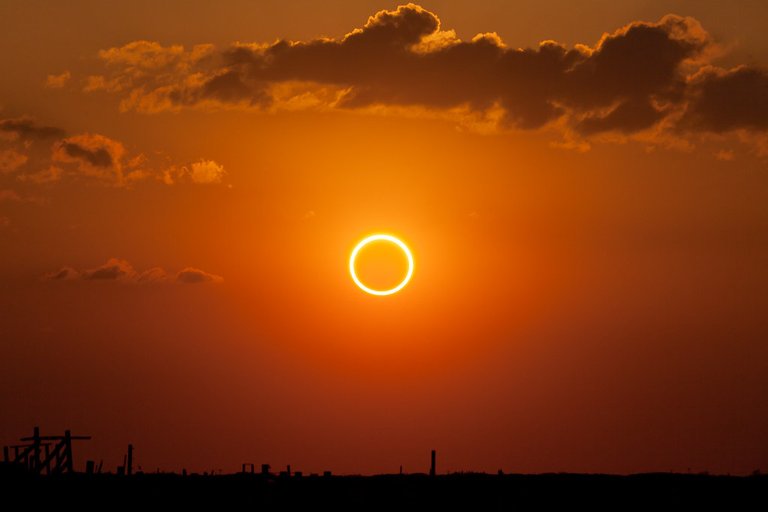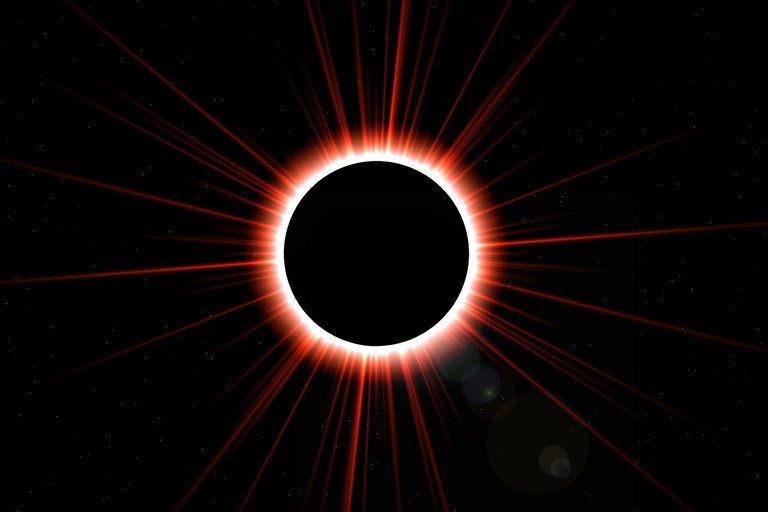A Solar Eclipse Experience
Solar eclipses were one event I always looked forward to experiencing as a child. I can remember one I experienced, and since then, I have wished to experience more. But why has a solar eclipse been a big deal to us on Earth, and why does the moon always cover the sun when this happens?
The sun is 10 times the size of anything in the solar system but compared to the Earth, it is 100 times bigger than our planet. Our moon is 400 times smaller than the sun but it is also about 400 times closer to us which is why you see the sun and the moon like they are the same size up above and as a result our moon blocks the rays of the sun from reaching earth once in a while.
An eclipse happens because the moon orbits between the earth and the sun and the moon orbits the sun every month but we do not get an eclipse every month because the moon's orbit is tilted a little from the earth’s orbital plane so an eclipse happens only when the moon orbit is aligned with earth's orbital plane allowing the moon to cast its shadow on earth after the sun shines towards it.
There are about 3 to 5 eclipses on earth yearly that aren't full but every few years a part of earth gets a full solar eclipse. People who are lucky to be in areas where a full eclipse will occur do not want to miss out on it so if you are one of those, then staying in the path of totality helps to see it as it covers Earth fully.
Calculating an eclipse is not an easy task. People of ancient times have been trying to get it right but it wasn't until 1715 that Edmond Halley came close to getting it right. Today, NASA uses supercomputers to factor over 38000 orbital patterns which helps us to identify the time of an eclipse, and they can only predict for the next thousand years.
The moon comes from the west of the sun covering it gradually. The sun shows a crescent shape after which the moon covers the sun leaving some flickers of shine around the edges after which it covers it completely. The flinkers or beads of light were first discovered by Francis Baily and so they are named after him as Baily’s beads.
Before the beads disappear, the sun forms a bright light around the moon known as the corona after which the light shows at the top of the moon like a ring and as it looks, it is known as the diamond ring. After this, the sunlight disappears leaving us with totality. At this point, one can look at the moon directly but then one would see by the edges of the moon, red colors which are gases blasting from the sun along its magnetic field.
After the eclipse, the moon begins to move away from the sun and another Baily's bead appears which could be accompanied by a diamond ring the moon begins to go away from the sun and we are back to normal with the experience of the eclipse. So I'll wait patiently for 20th March 2034 for the next solar eclipse in Nigeria so I can have another experience.
YOU CAN STUDY FURTHER
https://www.atlasobscura.com/articles/eclipse-maps-halley-18th-century-astronomy
https://eclipse.gsfc.nasa.gov/SEhelp/rotation.html
https://science.nasa.gov/resource/baileys-beads/
https://science.nasa.gov/eclipses/types
https://www.esa.int/Science_Exploration/Space_Science/What_is_an_eclipse
https://www.nhm.ac.uk/discover/solar-eclipse-guide.html
https://www.timeanddate.com/eclipse/in/nigeria


Thanks for your contribution to the STEMsocial community. Feel free to join us on discord to get to know the rest of us!
Please consider delegating to the @stemsocial account (85% of the curation rewards are returned).
Thanks for including @stemsocial as a beneficiary of this post and your support for promoting science and education on Hive.